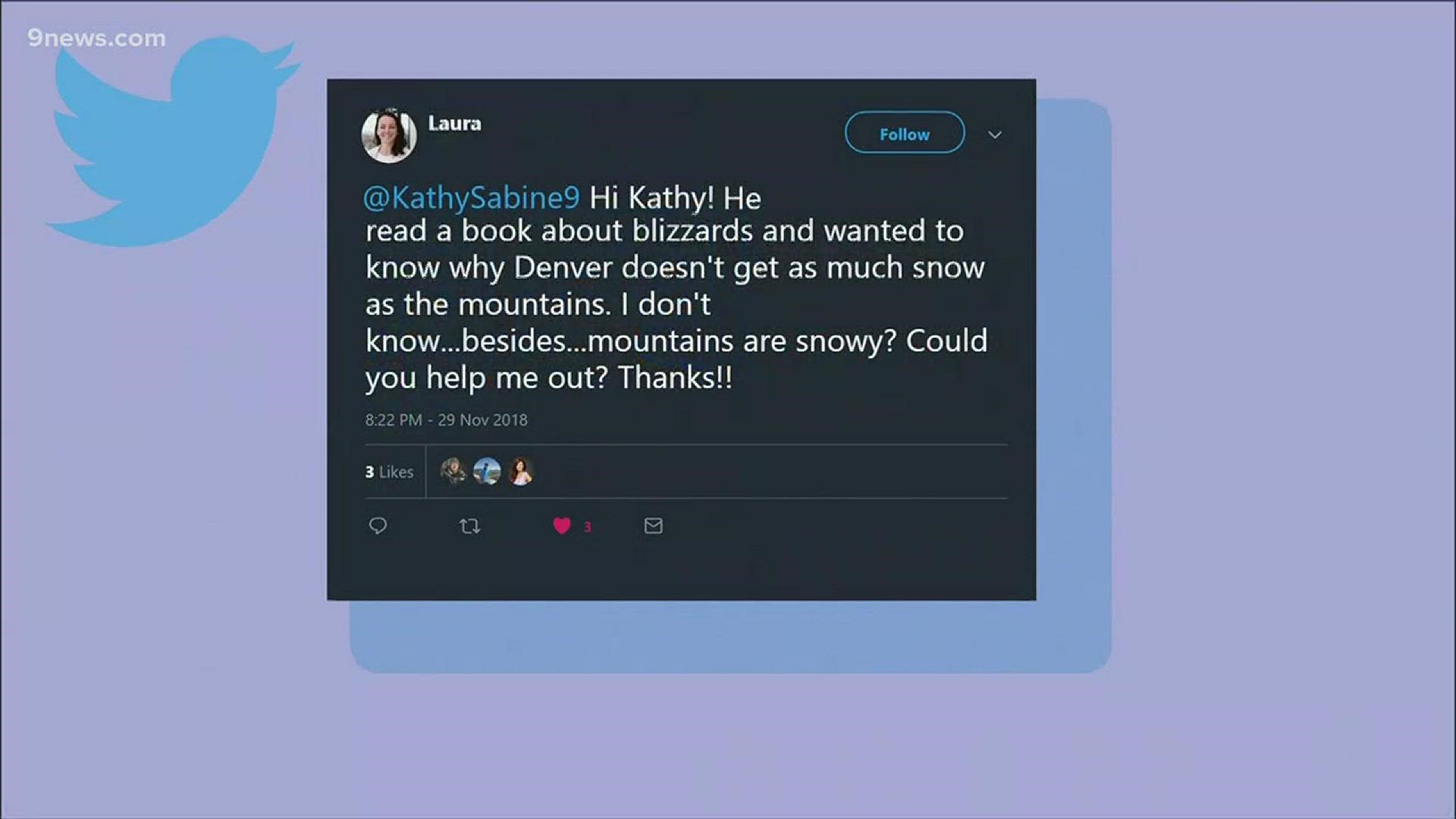One of the most common questions the 9NEWS weather team gets is “why do the mountains get so much more snow than Denver?”
Case in point? This recent tweet from a second grade teacher:
The storms have been coming to Colorado, and the temperatures have been plenty cold so far in the 2018-19 snow season, but only the mountains have received big snow. The Front Range is behind once again.
The reason? The track the storms have been taking, which doesn’t bring much moisture or favorable winds to the Front Range.
Here’s a breakdown:
- Storm location: So far, the storms have been in favorable spots for mountain snow, but not the Eastern Plains, which includes the Denver metro area, Fort Collins, Greeley, Castle Rock and Colorado Springs.
Storm winds have mostly been coming from the west or northwest into Colorado. This allows the winds to ride up the Western Slope and create snow showers over the Rocky Mountains. After the Rockies intercept that moisture, there is very little left for the Front Range.
Those westerly winds that come over the mountains are also sinking with no countering winds over the Front Range. Air dries out as it sinks, so it’s a double whammy for Denver.
- Moisture: Colorado is a very dry place and far from the oceans which supply the storms with moisture. Direct flow from the Pacific Ocean brings good moisture to Colorado, but it gets intercepted by the mountains unless the storm goes south. A southern storm track allows more moisture to be pulled out of the Gulf of Mexico region.
- Winds: North, south, and easterly winds will allow some angle of upslope for the eastern half of Colorado. Some form of easterly component is ideal. As air rides up the eastern slope of Colorado, it is condensing, and forming showers. Upslope is most effective when it pushes up against the foothills.
- The Perfect Storm: For the mountains, a perfect storm is just a long, extended period of westerly flow coming from the Pacific Ocean typically called an “Atmospheric River.
This scenario has played out a couple times this fall already.
For the Front Range, a perfect storm capitalizes on the three ingredients listed above and a southern storm track. They can’t be too far south though. A couple storms have taken a southern storm track, but just too far south to impact Colorado. A storm that slowly moves across the entire bottom of Colorado, pulls the moist air from the gulf and slides it easterly across the plains and up against the foothills typically called a “Four Corners Low.”
We’re still waiting for one of those this season.

